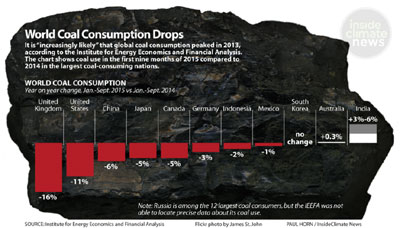In advance of the G7 meeting in Japan, healthcare organizations representing 300,000 people released a statement calling for the accelerated phase-out of coal.
Doctors, nurses and other health professionals from 30 countries point to the health risks from the air pollution coal creates, as well as the health impacts of climate change.
The Global Health Statement on Coal Plants says:
“Eliminating air pollution from coal-fired power plants provides immediate and significant air pollution related health benefits and health care savings. A coal phase-out also slows climate change, thereby reducing current and future illnesses and deaths from heatwaves, droughts, malnutrition, flooding, air pollution and wildfires.”
They note that 3.7 million people are dying prematurely every year because condition caused by or exacerbated by air pollution, including heart disease, lung cancer and acute respiratory infections. Given that there are readily available alternatives – energy efficiency and renewables – it is time to move on.
Air pollution has risen 8% since 2008 globally, according to the World Health Organisation. A full 98% of cities in developing countries do not meet WHO air standards.
The G7 meeting takes place May 26-27.
Japan on the Hotseat
Japan is the only G7 country that plans to expand coal, to take up the slack from the lack of nuclear energy. An eye-popping 43 new power plants could be built in the next 12 years.
Besides the dramatic rise of greenhouse gases – which the world absolutely can’t afford – it would lead to about 18,000 premature deaths, says a study by Greenpeace and Japan’s Kiko Network.
Japan’s latest climate pledge is correspondingly weak – 26% lower carbon emissions by 2030, from 2013 levels.
“We could save thousands of lives cut short from air pollution if the government chose to embrace renewable energy over dirty coal. Japan is already considered the worst performer among the G7 when it comes to phasing out coal. If we are to have any chance of limiting average global temperature rise to 1.5 degrees, fossil fuels must be kept in the ground – not pumped into the air over our cities,” Lauri Myllyvirta of Greenpeace told The Guardian.
The particle pollution from the six plants planned near Tokyo would equal 13 million cars.
A study by Oxford University’s Smith School of Enterprise and the Environment warns Japan could be left with $56 billion in stranded investments as the world moves away from emissions-producing energy and toward more cost-effective renewables, reports The Guardian.
30% of Japan’s electricity came from nuclear before the Fukushima meltdown. Just two of 12 reactors are online and the public vociferously protests against more nuclear. Still, the government insists nuclear will supply 20-22% of electricity by 2030. Then why the need for so much coal?
Meanwhile, solar and wind has been booming in Japan since Fukushima and the country leads on energy efficiency. The target for solar is 28 GW by 2020 and 40% renewable energy by 2030.
“Japan needs to give renewables priority access to the grid [as China is starting to do] and stop wasting resources trying to restart nuclear plants and expanding dirty coal,” Kimiko Hirata of Kiko Network, told The Guardian.
Japan wants to be a leader on advanced coal technology, such as turning coal to gas using fuel cells.
Its Not That Coal Isn’t Expanding Elsewhere
While China is cutting back on coal mining by about 9% over five years, it is encouraging producers to export it, reports Bloomberg.
And under South Korea’s new President, it is doing an about-face on climate change. Once viewed as a leader with strong emission reduction targets and a national cap-and-trade program, the country is turning back to coal.
This year, nine new coal-fired power plants turn on – a total of 7.7 gigawatts. Coal still provides almost 40% of electricity.
“It takes about 4-5 years to build new power plants and start operations. We just can’t cancel the operation of new plants that are already built and ready,” an energy ministry official told Reuters. Plans are for 19 more power plants by 2022, a 65% increase in capacity, reports Carbon Pulse.
Gone is the country’s emissions reduction target of 30% by 2020, and the Ministry of Environment has been stripped of its responsibility for cap-and-trade. Instead, it will be run by the business-friendly Ministry of Strategy & Finance. The Green Growth Act will be updated to reflect Korea’s Paris pledge of 37% by 2030.
So, although Scotland and other EU countries abandoned coal this year, and the US is using a third less coal, that’s more than offset by those starting up this year and the 1500 in the planning stage across the world – mostly in Asia.
While half may not end up being built, “Think about what that money could do for other, cleaner types of energy: it could fund the International Energy Agency’s scenario to provide power to the 1.2 billion people lacking access, as well as increase global solar and wind by 39%,” says Greenpeace.
“Even if no more coal plants are built, emissions from existing ones would still be 150% greater than what scientists say would limit global warming to 2°C,” they add.
Read our article, The On-Going Struggle to Put An End To Coal.

